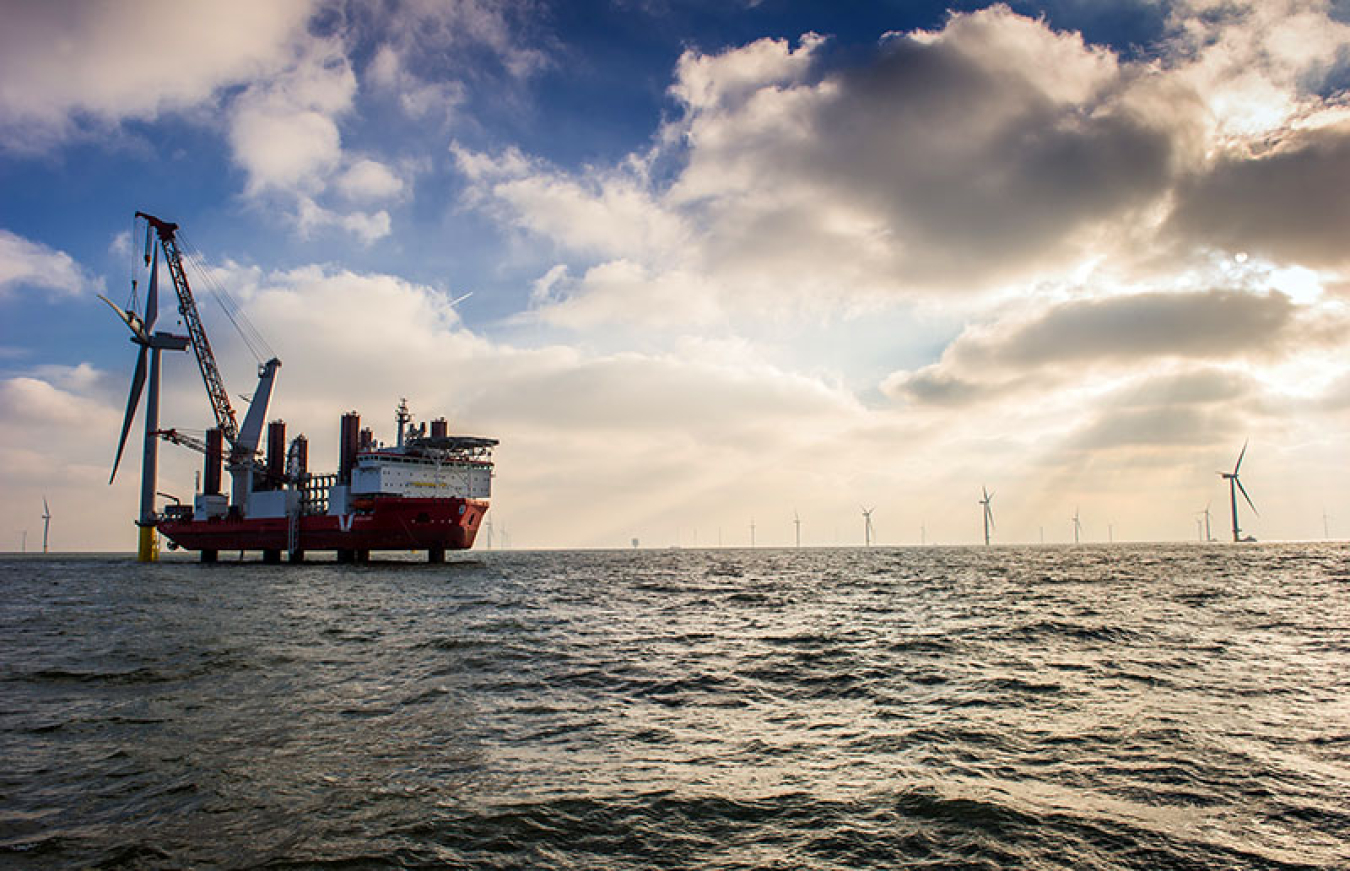The installation of offshore wind farms requires a highly specialized fleet of vessels--but no such fleet currently exists in the United States. As part of a broader DOE initiative to accelerate the growth of the U.S. offshore wind industry, energy res...
Wind Energy Technologies Office
October 1, 2013
Douglas-Westwood collected data on vessels currently deployed in the international offshore wind industry, like the one pictured here at the London Array in the United Kingdom.
Photo by London Array Limited
This is an excerpt from the Third Quarter 2013 edition of the Wind Program R&D Newsletter.
The installation of offshore wind farms requires a highly specialized fleet of vessels—but no such fleet currently exists in the United States. As part of a broader U.S. Department of Energy (DOE) initiative to accelerate the growth of the U.S. offshore wind industry, energy research group Douglas-Westwood identified national vessel requirements under several offshore wind industry growth scenarios.
"The study looks specifically into the vessel-related aspects of offshore wind development, and identifies the challenges and opportunities related to the installation and maintenance of offshore wind turbines in the United States," said Steven Kopits, managing director of Douglas-Westwood in New York.
For this work, Douglas-Westwood developed a complex model to calculate the demand for specialized vessels under various scenarios in the United States, and weighed some of the practical and economic constraints that may be limiting the development of a national fleet. For example, the team analyzed what the Jones Act—which imposes requirements on vessels transporting goods in U.S. waters—and other regulations mean for offshore wind installation, especially when it involves European installation vessels.
"We found that the lack of an available domestic installation vessel fleet, the small-scale industry structure, the costly operation of U.S. shipyards, and the limitations imposed by the Jones Act are likely among the key factors limiting U.S. offshore wind development," Kopits said.
The final report on the study's findings includes a comprehensive list of currently available and soon-to-be-built installation vessels, most of which are operating in Europe.
"These vessels can be mobilized across the Atlantic if the necessary installation capabilities are missing in the United States," Kopits said. "We believe that it is useful if project developers are aware of these vessels' respective capabilities so they can develop their installation strategies accordingly."
The report also identifies suitable shipyards where U.S.-flagged vessels—vessels owned, operated, and crewed by U.S. entities—could be built in the future. Douglas-Westwood consulted extensively with American and European installation companies to sketch out key installation strategies for U.S. offshore wind developers.
"We synthesize lessons learned and draw some conclusions from the European offshore wind installation experience, which will provide a useful reference for prospective U.S. developers and vessel operators alike," Kopits said. "Our study is among the first to provide a detailed comparison of the economics of various installation strategies. We also list the most potent policy tools that can be used to address some of the market barriers to U.S. offshore wind development."
Douglas-Westwood collaborated with DOE's National Renewable Energy Laboratory (NREL) and a number of subcontractors on the study. Douglas-Westwood developed the basic offshore wind development scenarios jointly with NREL. Naval engineering and consulting company Knud E. Hansen provided the comprehensive list of currently available installation vessels as a basis for the report. The Renewable Energy Group helped the team understand the state-level aspects of offshore wind development and prepared detailed state offshore wind profiles. The Great Lakes Commission offered important insights about the particular challenges facing offshore wind developers in the Great Lakes region. Finally, the U.S. Offshore Wind Collaborative organized a number of webinars, live presentations, and industry conferences at which the group shared the interim and final results of the work.
Douglas-Westwood has already applied findings from the DOE-supported study in a follow-on project with the New Jersey Department of Transportation. The group is helping the State of New Jersey position itself to capitalize on benefits from offshore wind development on the U.S. East Coast.
"Our study provides an aggregate view of the vessel-related aspects of offshore wind, and we are hoping that the report will serve as a handbook for all stakeholders in the U.S. offshore wind industry, including project developers, installation companies, shipbuilders, and federal- and state-level government agencies, as well as the wider scientific community," Kopits said.

